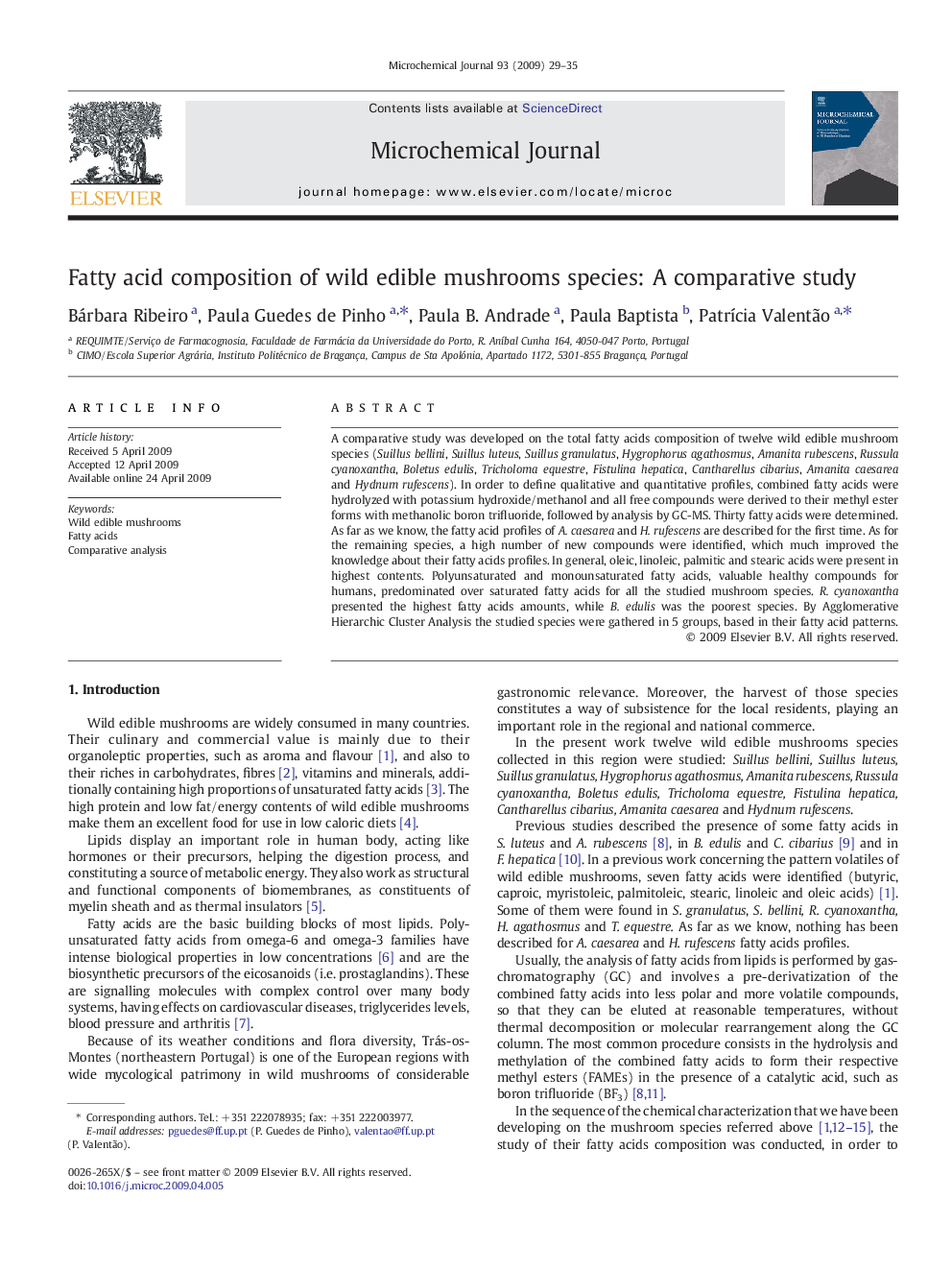| Article ID | Journal | Published Year | Pages | File Type |
|---|---|---|---|---|
| 1228478 | Microchemical Journal | 2009 | 7 Pages |
A comparative study was developed on the total fatty acids composition of twelve wild edible mushroom species (Suillus bellini, Suillus luteus, Suillus granulatus, Hygrophorus agathosmus, Amanita rubescens, Russula cyanoxantha, Boletus edulis, Tricholoma equestre, Fistulina hepatica, Cantharellus cibarius, Amanita caesarea and Hydnum rufescens). In order to define qualitative and quantitative profiles, combined fatty acids were hydrolyzed with potassium hydroxide/methanol and all free compounds were derived to their methyl ester forms with methanolic boron trifluoride, followed by analysis by GC-MS. Thirty fatty acids were determined. As far as we know, the fatty acid profiles of A. caesarea and H. rufescens are described for the first time. As for the remaining species, a high number of new compounds were identified, which much improved the knowledge about their fatty acids profiles. In general, oleic, linoleic, palmitic and stearic acids were present in highest contents. Polyunsaturated and monounsaturated fatty acids, valuable healthy compounds for humans, predominated over saturated fatty acids for all the studied mushroom species. R. cyanoxantha presented the highest fatty acids amounts, while B. edulis was the poorest species. By Agglomerative Hierarchic Cluster Analysis the studied species were gathered in 5 groups, based in their fatty acid patterns.
